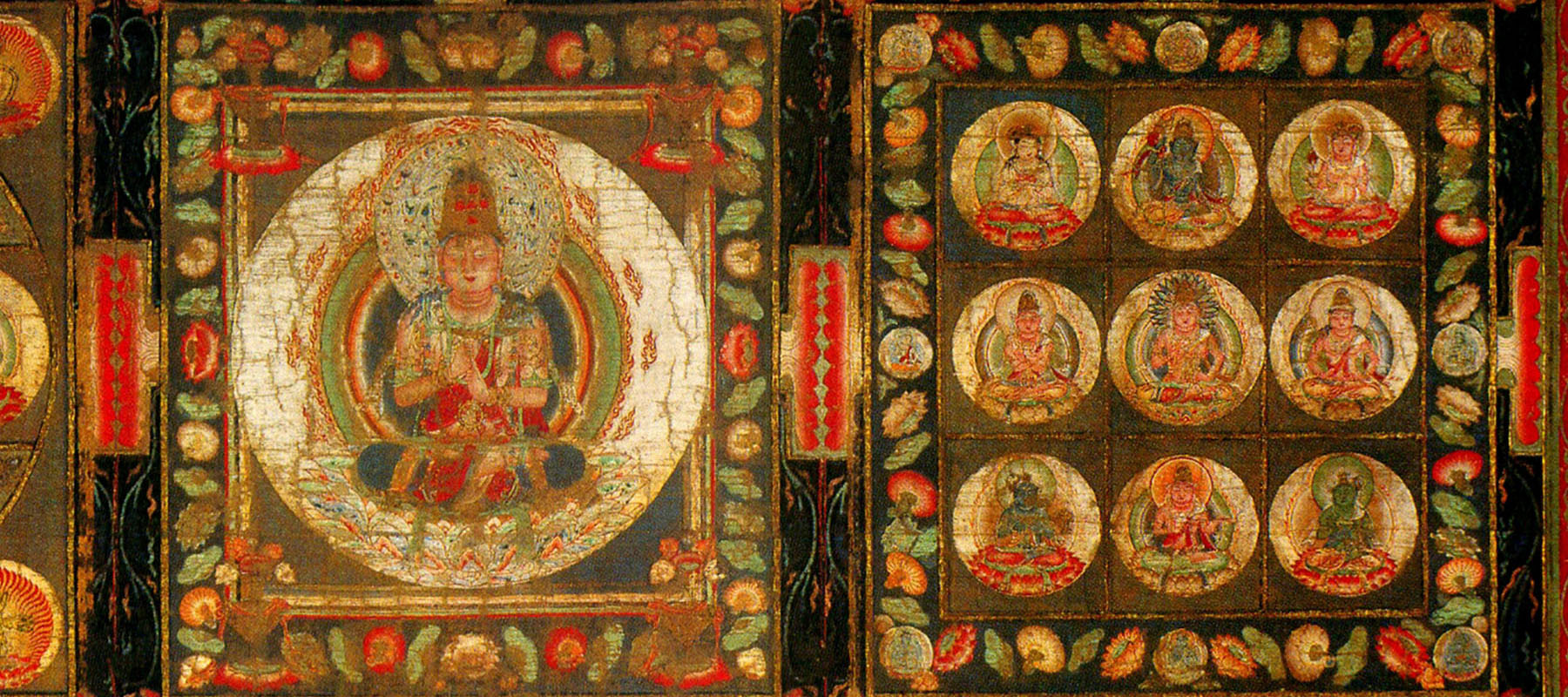Mandala
Visualizing the Essence

Visualizing the Essence

Visualizing the Essence
A mandala is a schematic representation of the Buddhist cosmos. While three-dimensional versions exist, they are typically two-dimensional diagrams. Most mandala present symbolic or anthropomorphic representations of Buddhas, Bodhisattvas and other supernatural beings that make up the Buddhist pantheon. The complex geometrical configuration of these images show the interconnected relationships among these beings.
Contemplation of these interrelationships is thought to awaken in the observer the buddha-nature latent within everyone. In this sense, a mandala is more than a representation of the cosmos; it conveys the essence of Buddhist truth and therefore possesses the generative force through which all the Buddhas arise.
This idea is stated explicitly in the Dainichi-kyō (Sanskrit: Vairocanābhisaṃbodhi Sūtra).
Mandala play a large role in Shingon practice. They are used as aids to meditation as well as within important rites of initiation (such as the kanjō-kechien in which a bond is established between an initiate and a particular deity).
The two mandala that figure prominently in the ritual practices of Shingon are the Kongōkai 金剛界(or "Diamond World") and Taizōkai 胎蔵界("Womb World") Mandala. Together, they are known as the Ryōbu 両部 ( "Dual" or "Twofold") mandala. They were systematized in China by Kūkai’s master, the Chinese priest Huiguo (746-805).
Kūkai introduced these mandala to Japan in the early ninth century.
The Diamond World Mandala is thought to represent unconditioned reality as it exists in the realm of the Buddhas while the Womb World Mandala depicts reality as it is revealed in the physical world. In other words, one shows reality as perceived by the mind; the other shows reality as perceived by the senses. In addition to their use in meditation, mandala are also central to Shingon initiation rites.
NOTE that I am using "realm" and "world" interchangeably as translations for the Japanese 界.

The following illustration shows how the two mandala are typically arranged on the sides of a Shingon altar (like the one found at the Kondō of Mt. Kōya's Danjō-garan).
This is the view looking north from the entrance (which faces south).
The Kongōkai Mandala, the top of which is oriented to the west, is placed on the western side of the altar.

The Taizōkai Mandala, the top of which is oriented to the east, is placed on the eastern side.
© 2024, k. collins